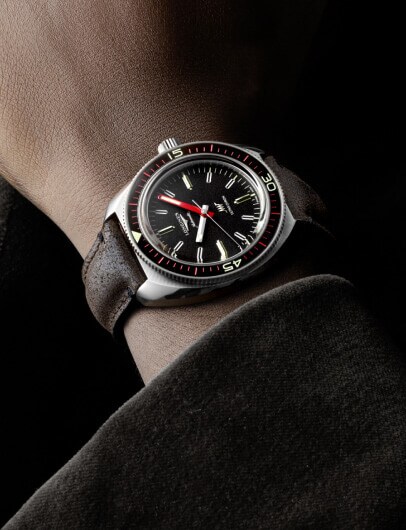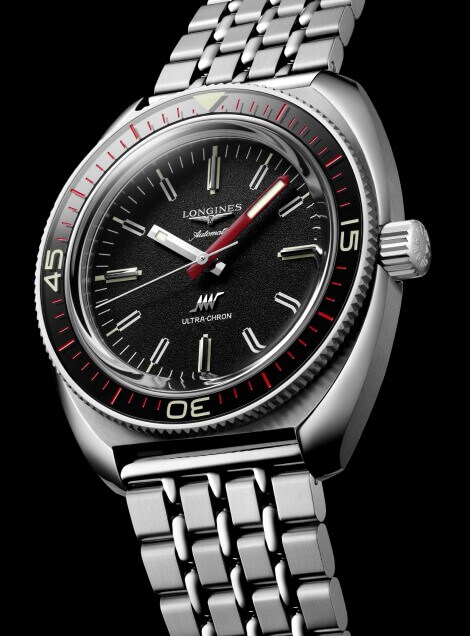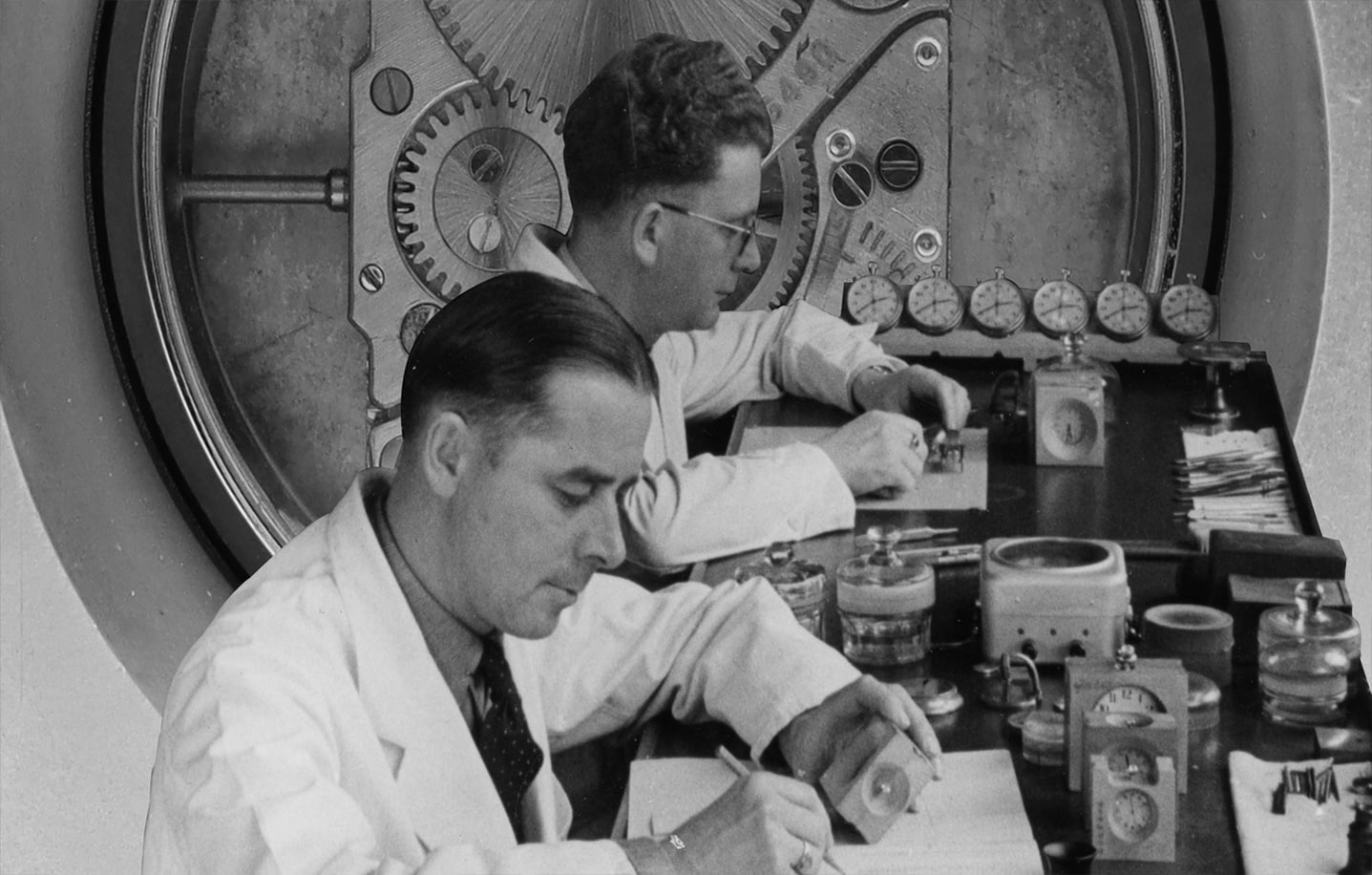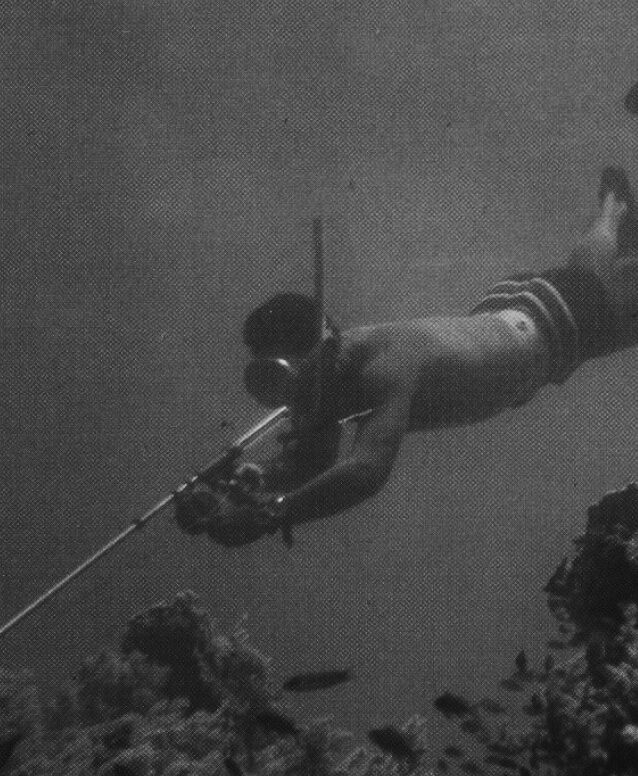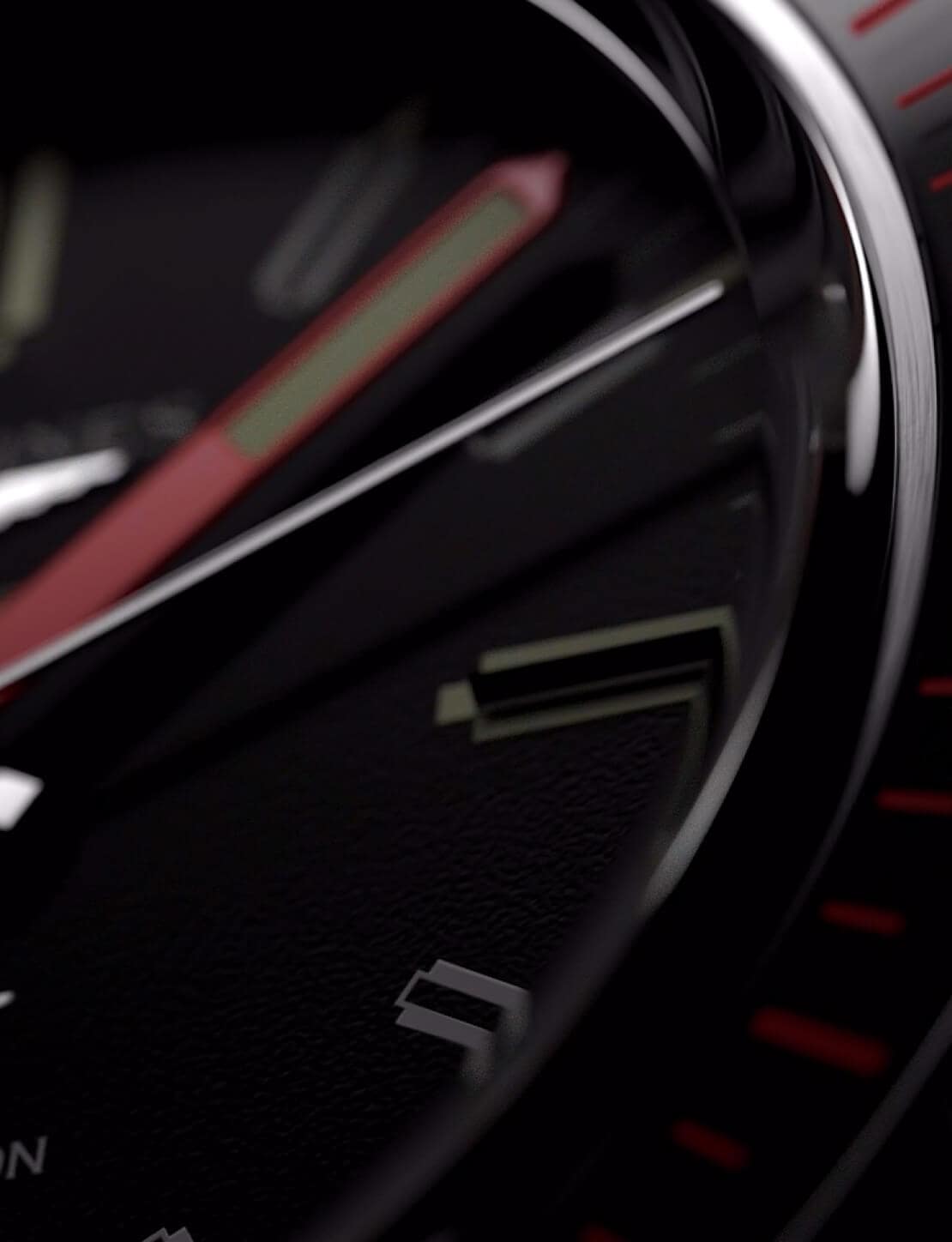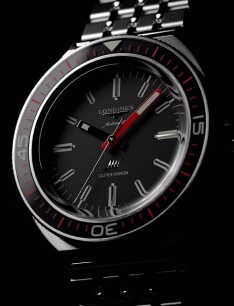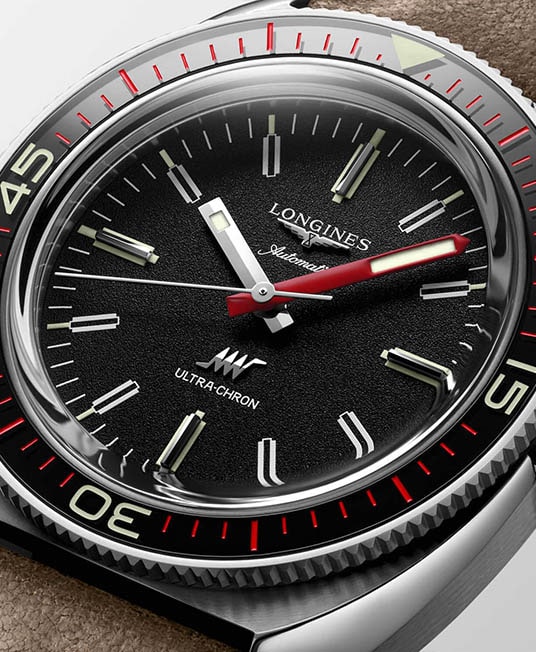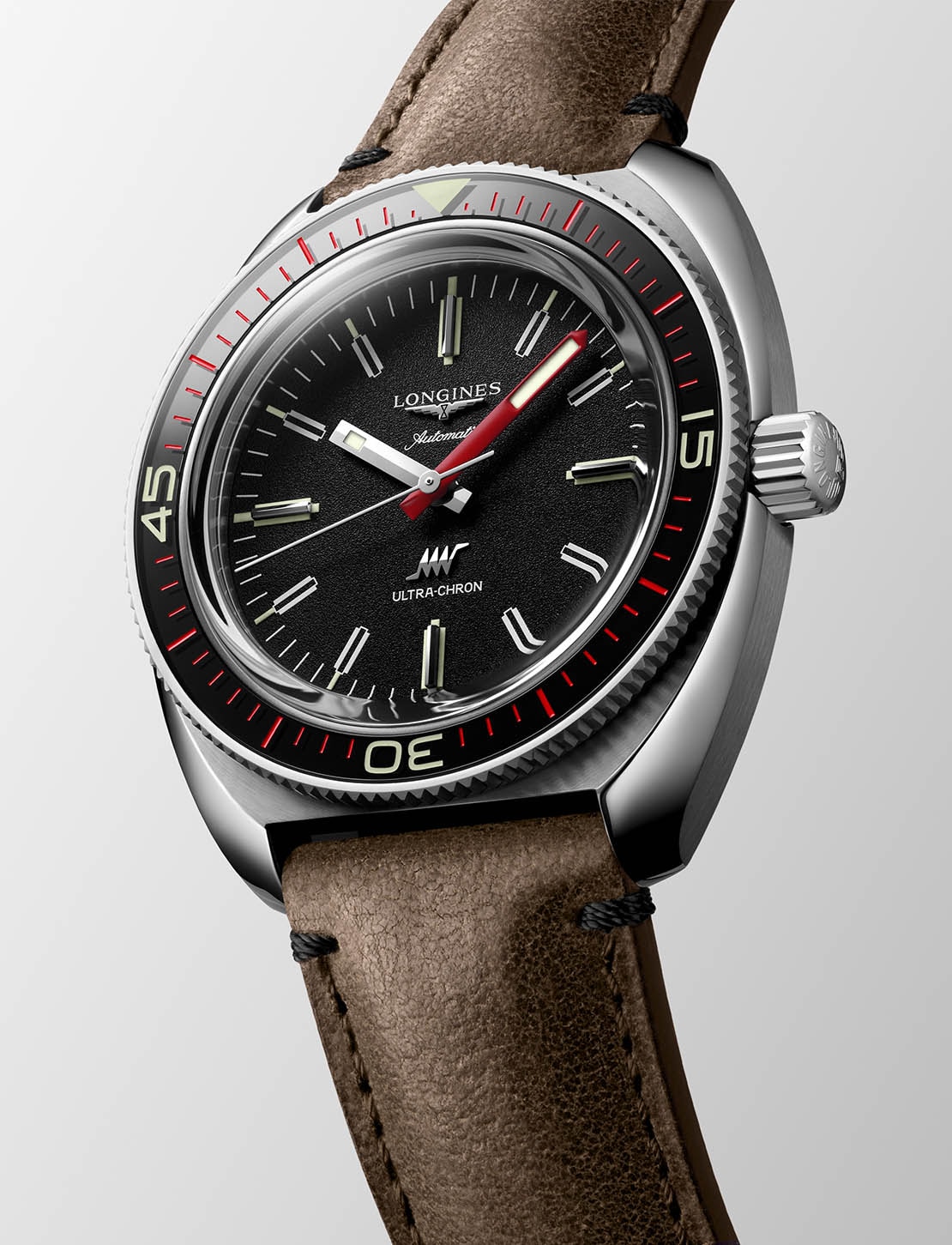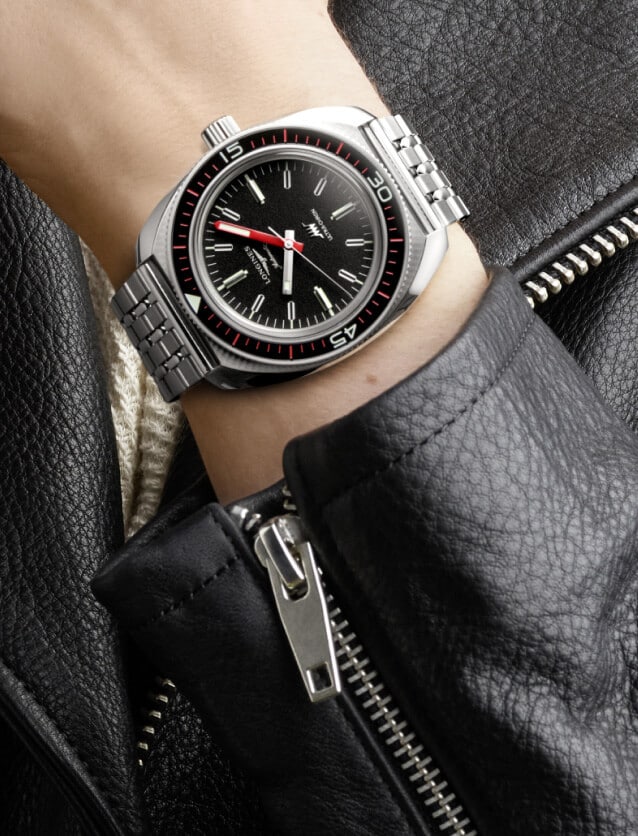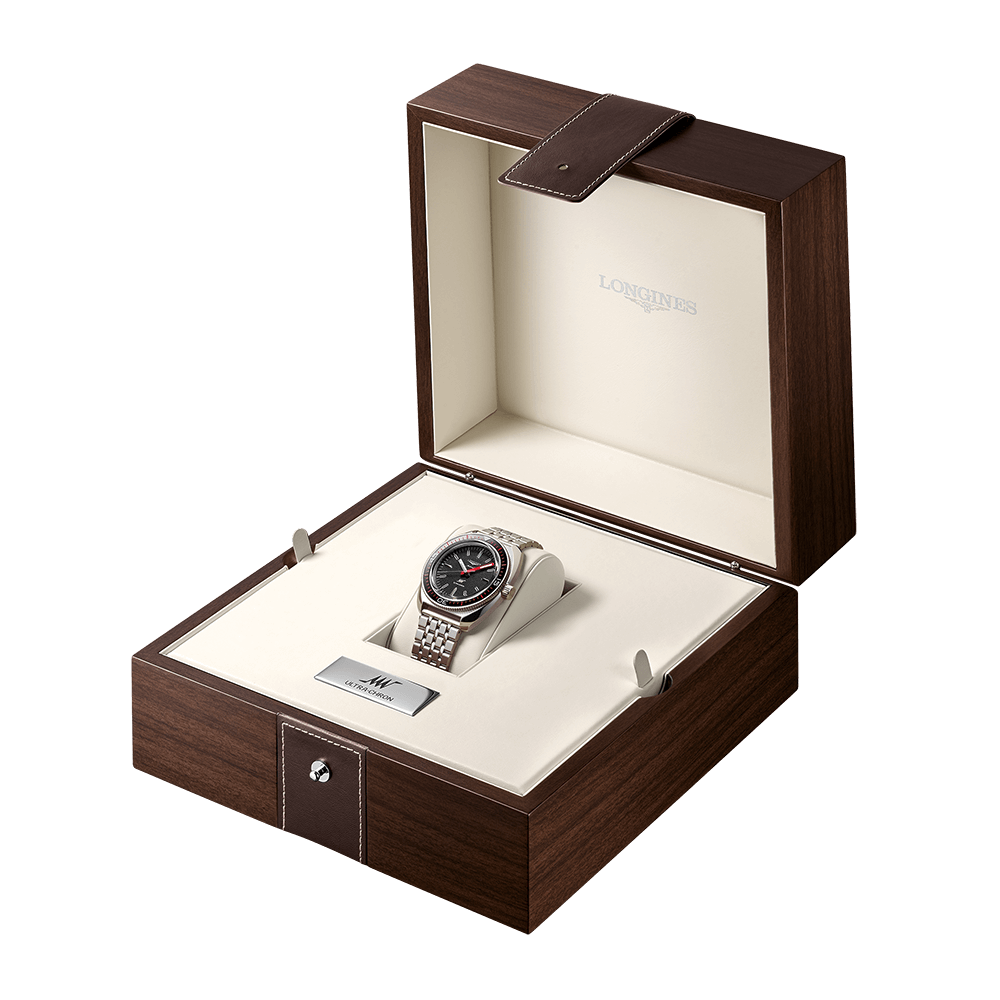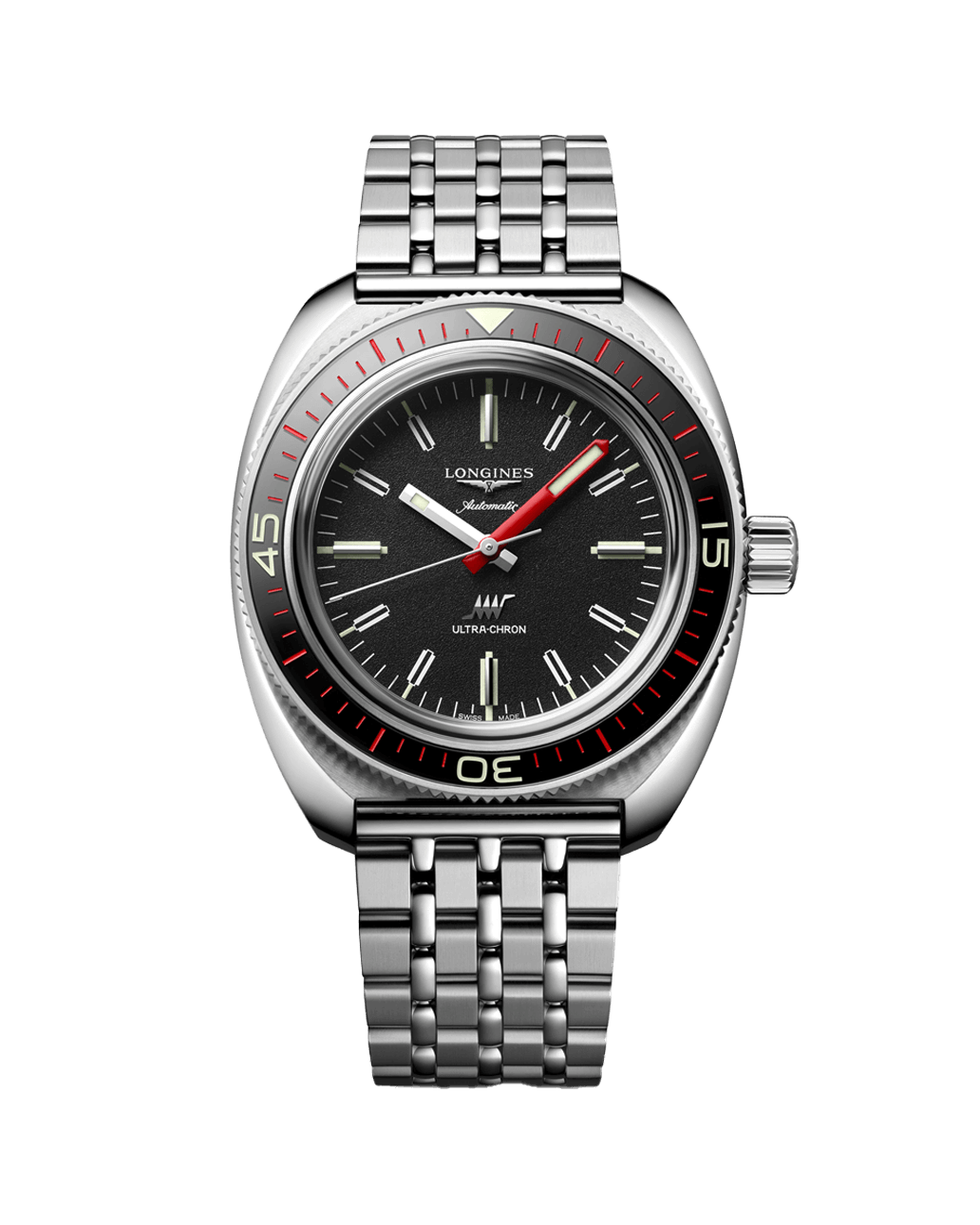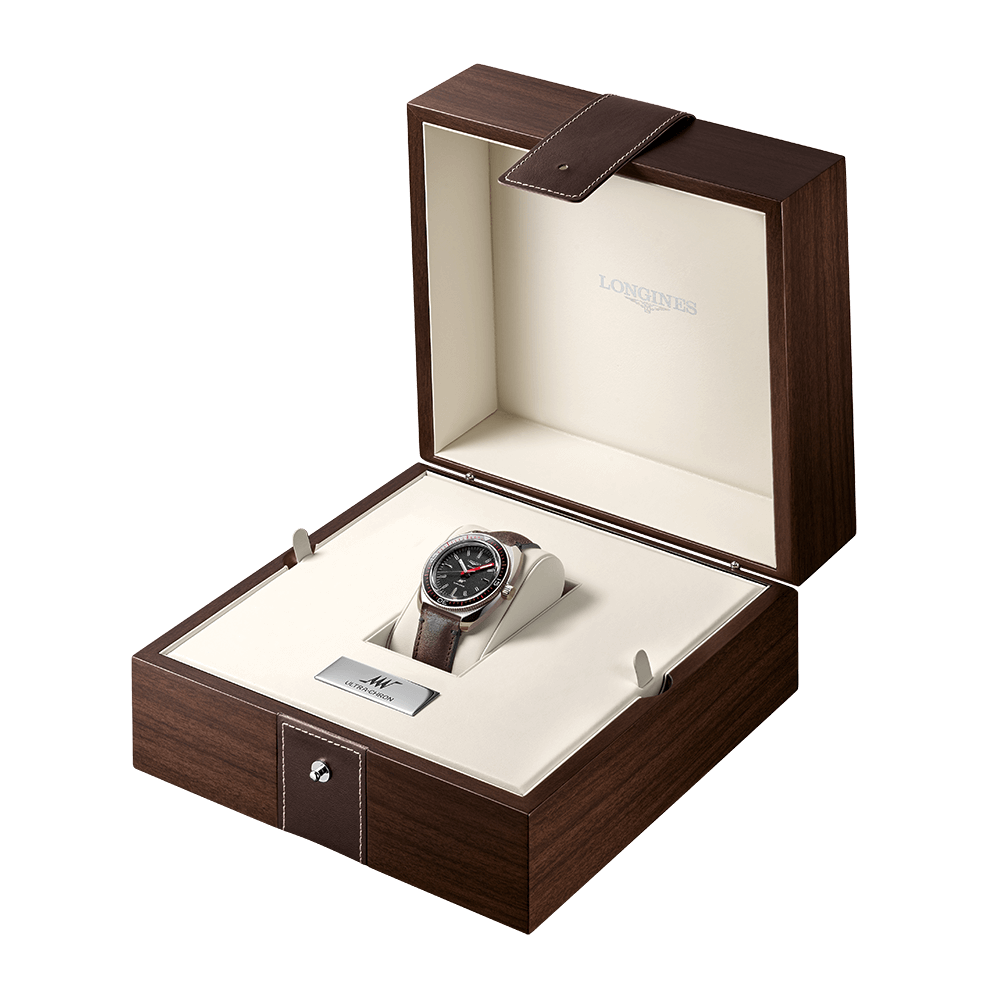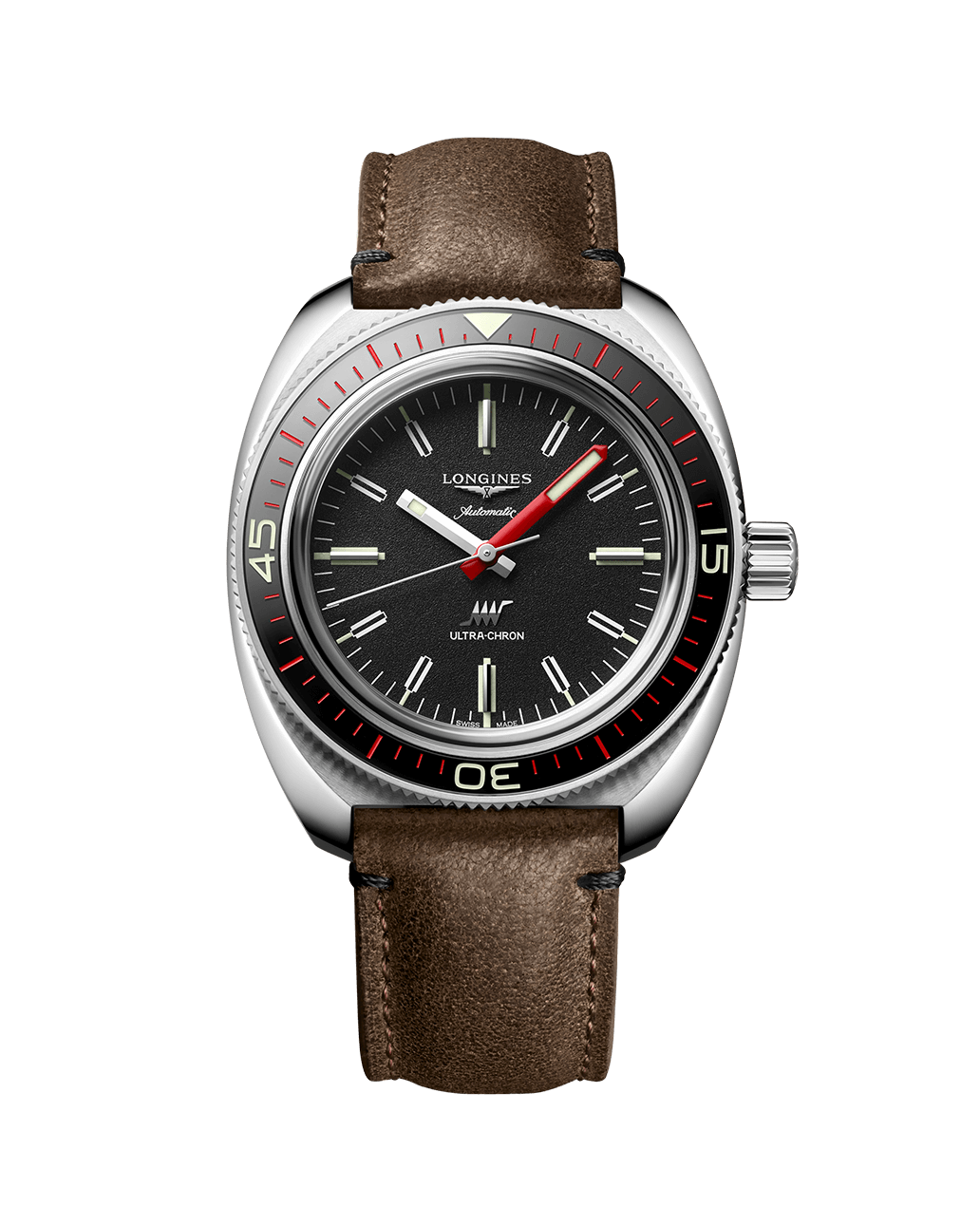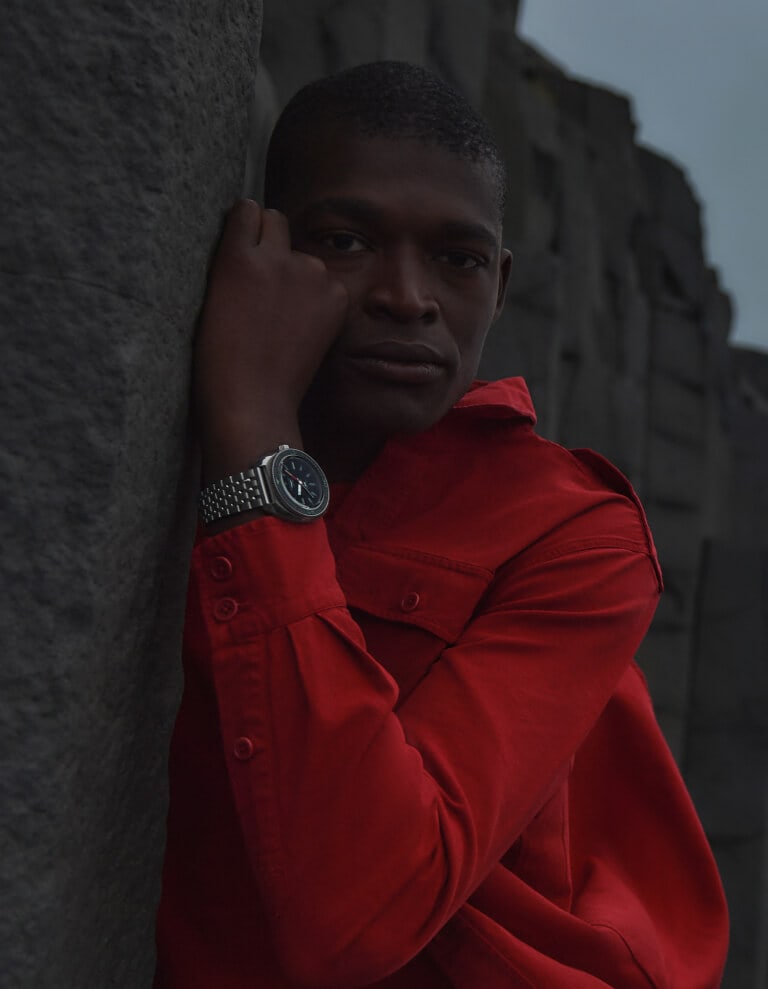1910
In 1910, LONGINES developed its first high-frequency movement for a stopwatch to measure 1/10th of a second.
LONGINES has more than 100 years of expertise in the field of high-frequency timepieces
Two years afterwards, in 1916, LONGINES built a stopwatch oscillating at a ten times higher frequency, indicating 1/100th of a second.
Originally used for professional timekeeping activities at sporting events, high-frequency movements offer several advantages:
- They are able to time events to 1/10th or 1/100th of a second
- They are more resistant to external shocks
- Increasing the frequency may serve to improve the accuracy
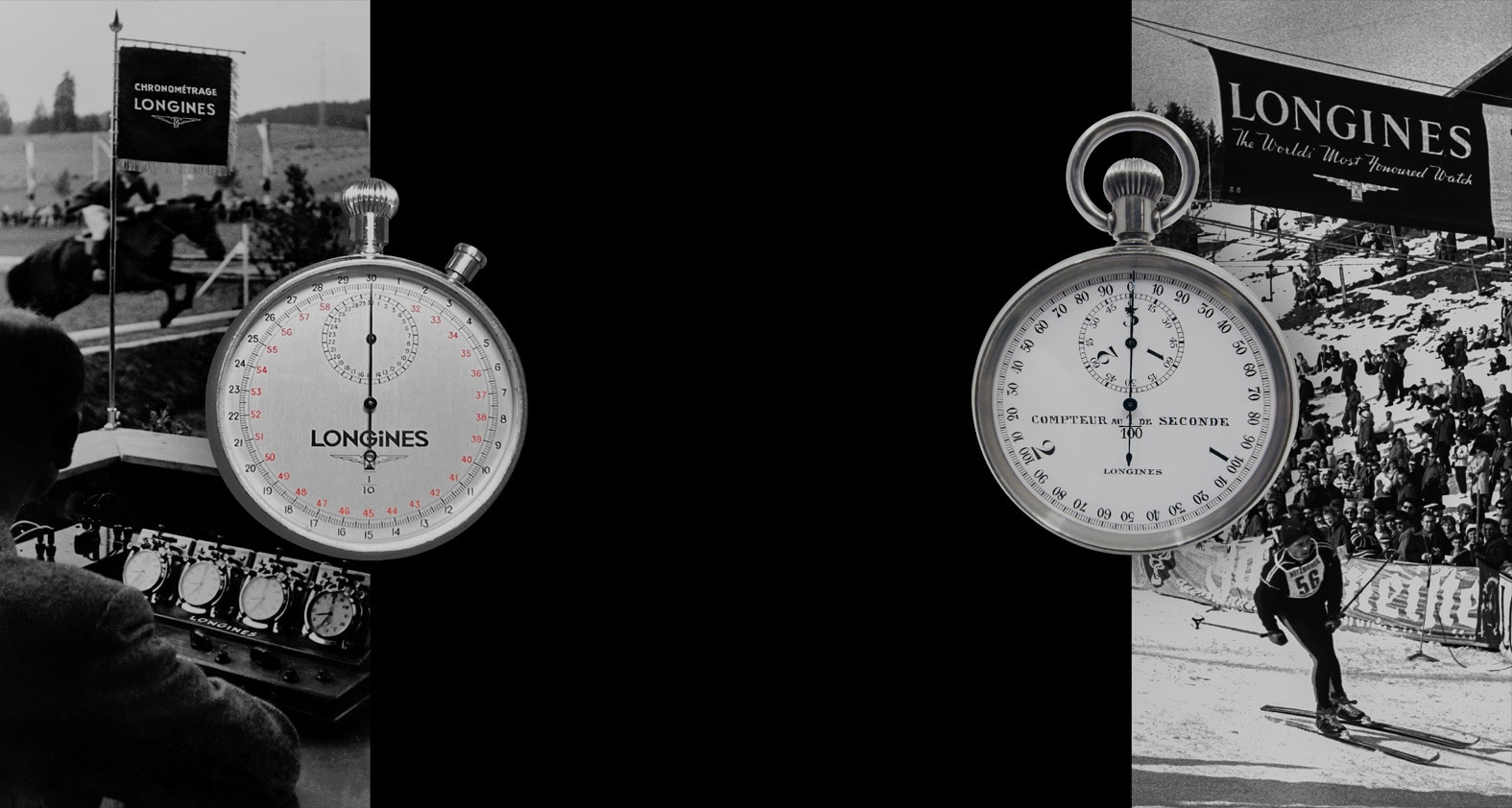
More than 100 years of expertise in the field of high-frequency timepieces
1959
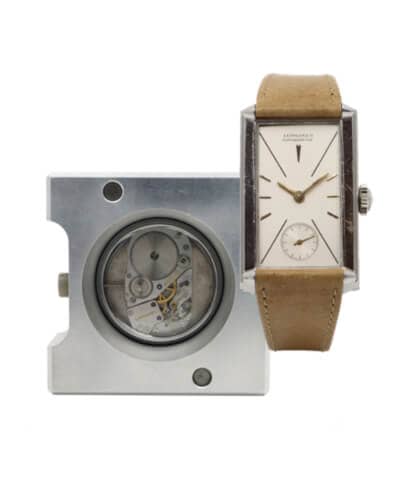
Calibre 360
In 1959, LONGINES achieved a breakthrough in precision watchmaking
The engineers in Saint-Imier developed the World's first high-frequency movement (5Hz) for a wristwatch. Named calibre 360, it is an Observatory Chronometer of highest precision.
The calibre 360 was in 1961 the most accurate watch at the Neuchâtel Observatory chronometry competition.
1967
LONGINES has more than 100 years of expertise in the field of high-frequency timepieces

LONGINES’ watchmakers introduced in 1967 a timepiece more accurate than a chronometer: THE LONGINES ULTRA-CHRON
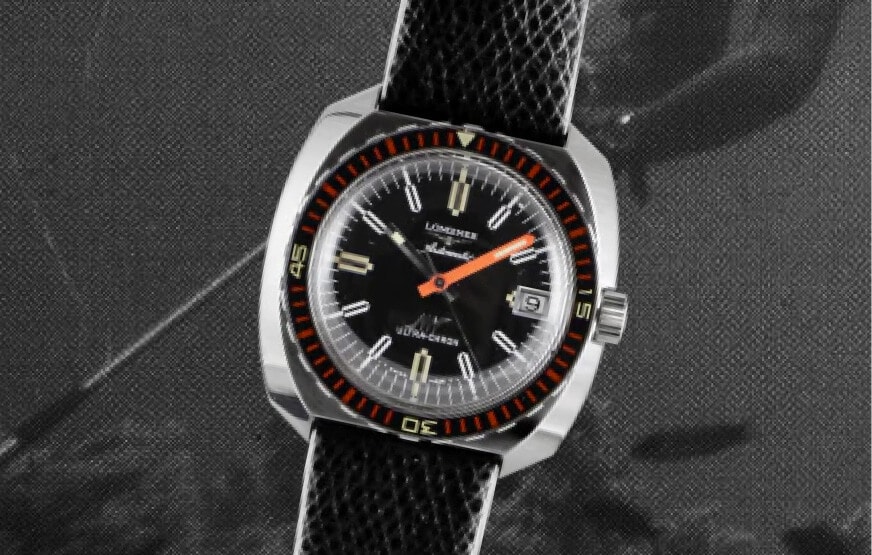
Shortly afterwards, they drew a sporty version of the LONGINES Ultra-Chron: A diver’s watch with a bright-red minute hand that was waterproof to 200 meters. Introduced in 1968, it was the first high-frequency diving watch, and probably the most accurate.
Drag to explore history
Close
1910
In 1910, LONGINES developed its first high-frequency movement for a stopwatch to measure 1/10th of a second.
LONGINES has more than 100 years of expertise in the field of high-frequency timepieces
Two years afterwards, in 1916, LONGINES built a stopwatch oscillating at a ten times higher frequency, indicating 1/100th of a second.
Originally used for professional timekeeping activities at sporting events, high-frequency movements offer several advantages:
- They are able to time events to 1/10th or 1/100th of a second
- They are more resistant to external shocks
- Increasing the frequency may serve to improve the accuracy

More than 100 years of expertise in the field of high-frequency timepieces
1959

Calibre 360
In 1959, LONGINES achieved a breakthrough in precision watchmaking
The engineers in Saint-Imier developed the World's first high-frequency movement (5Hz) for a wristwatch. Named calibre 360, it is an Observatory Chronometer of highest precision.
The calibre 360 was in 1961 the most accurate watch at the Neuchâtel Observatory chronometry competition.
1967
LONGINES has more than 100 years of expertise in the field of high-frequency timepieces

LONGINES’ watchmakers introduced in 1967 a timepiece more accurate than a chronometer: THE LONGINES ULTRA-CHRON

Shortly afterwards, they drew a sporty version of the LONGINES Ultra-Chron: A diver’s watch with a bright-red minute hand that was waterproof to 200 meters. Introduced in 1968, it was the first high-frequency diving watch, and probably the most accurate.
